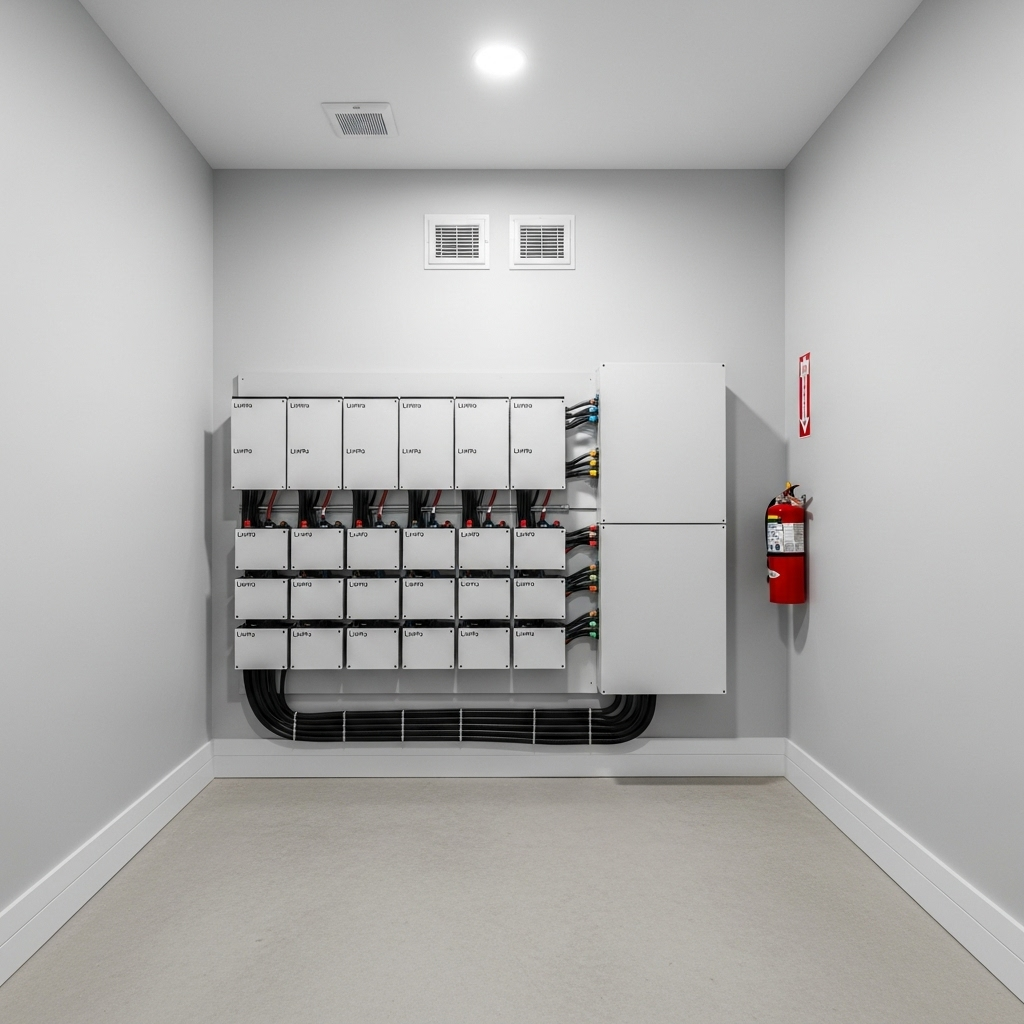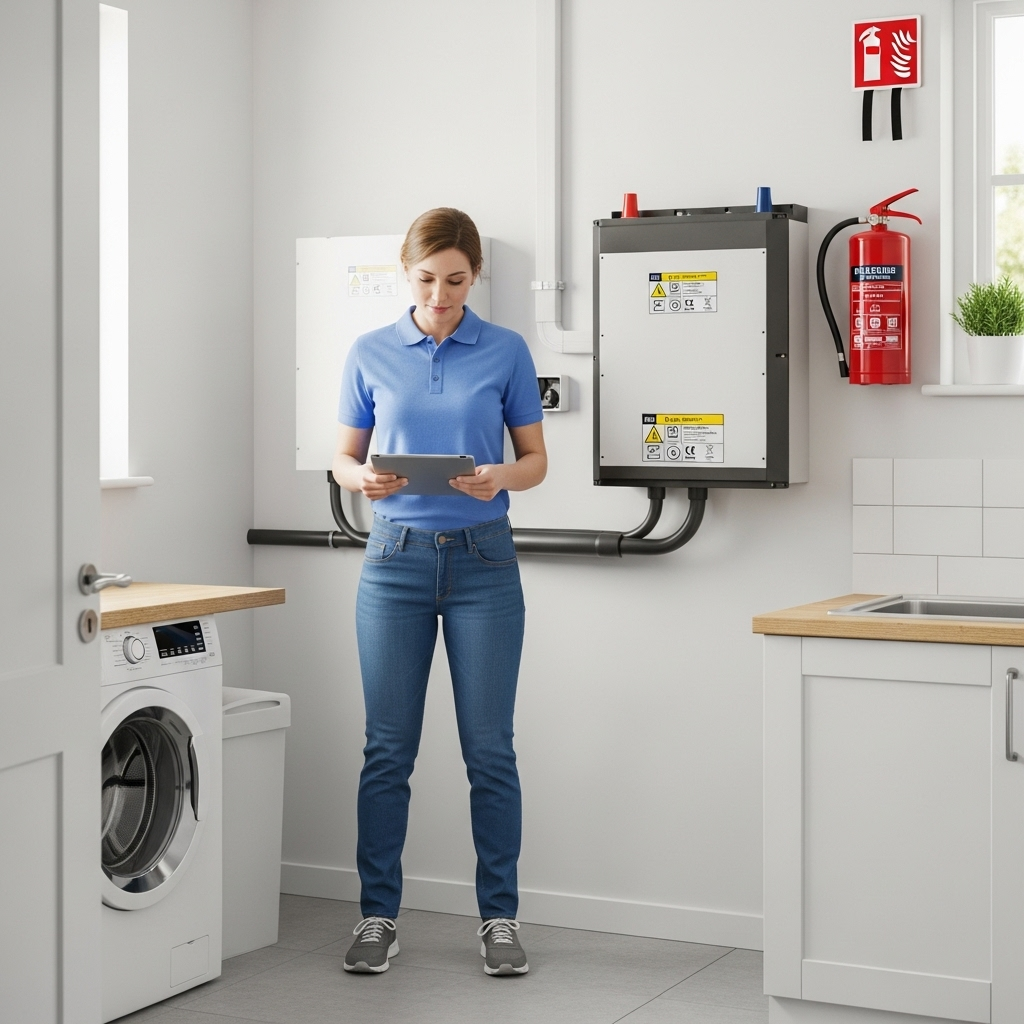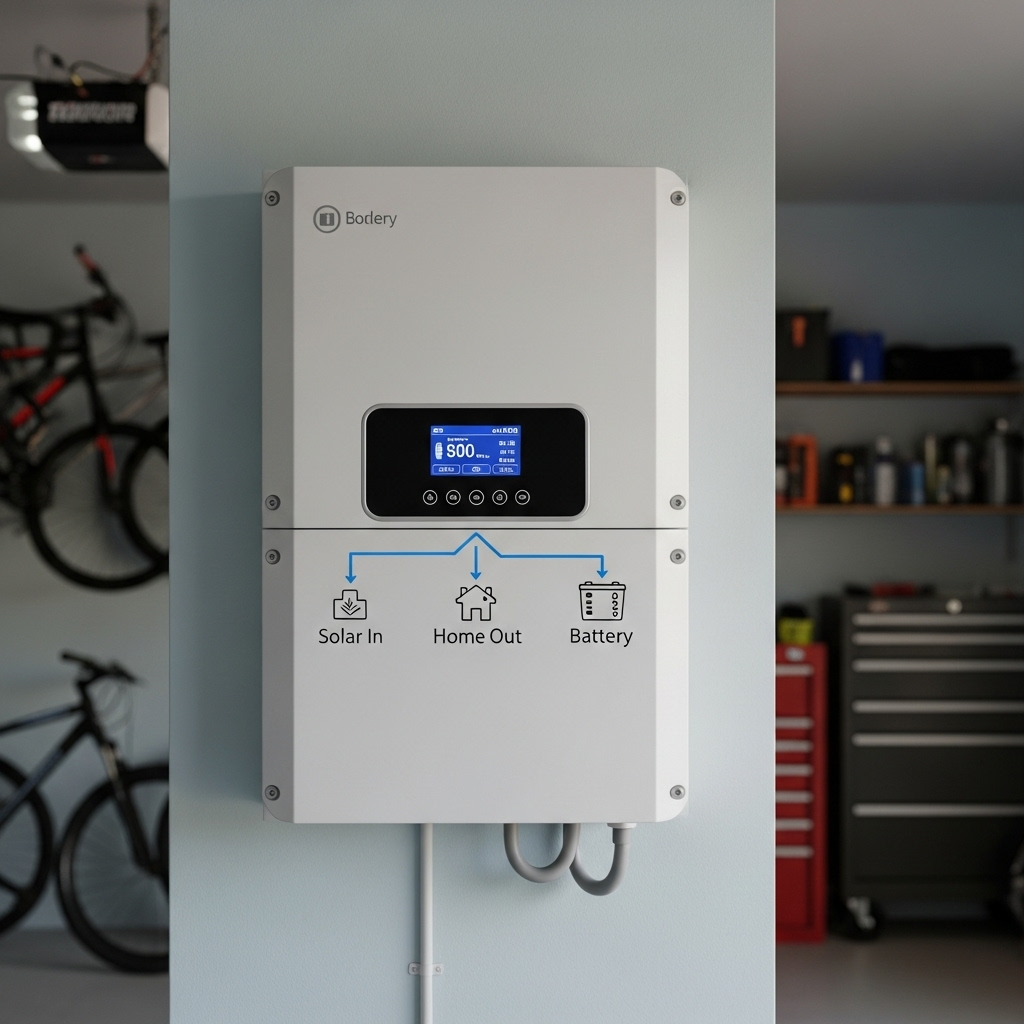Home energy storage systems are becoming a key feature in modern households. As investment in battery storage grows, ensuring the safety of these systems is paramount. Global spending on battery storage more than doubled in 2022, reaching over USD 20 billion, as noted in the World Energy Investment 2023 report. This highlights the significant value these systems represent. While much attention is given to battery maintenance, the physical environment where the system operates is the foundation of safety. This checklist focuses specifically on the battery room to help you identify and mitigate potential fire hazards, protecting both your investment and your home.
Foundational Safety: Location and Structural Integrity
The physical location of your battery system is your first line of defense against potential hazards. A well-chosen and properly prepared space minimizes risks from the outset. It establishes a secure base for the system's long-term operation.
Choosing the Right Location
The ideal location for a battery system is a space that is dry, protected from the elements, and separated from primary living areas. Garages, basements, or dedicated outdoor enclosures are common choices. The space should maintain a relatively stable temperature and be free from any nearby flammable or combustible materials. Proper placement reduces exposure to environmental stressors that could compromise the system's integrity.
Clearances and Physical Protection
Your battery system needs room to breathe. Most manufacturers recommend at least three feet of clearance on all sides to allow for adequate airflow and service access. This space prevents heat from building up around the unit. If the system is installed in a high-traffic area, such as a garage, consider installing physical barriers like bollards. These barriers protect the unit from accidental impacts that could cause internal damage and create a serious safety issue.
The Critical Role of Ventilation and Temperature Control
Effective thermal management is crucial for the safe operation of any battery system. Overheating can degrade battery components and, in a worst-case scenario, lead to thermal runaway. Proper ventilation and temperature control are non-negotiable aspects of a fire-safe battery room.
Ensuring Adequate Airflow
Ventilation removes excess heat and prevents the potential buildup of gases. Depending on the system and location, this can be achieved through passive methods like vents or active methods like exhaust fans. Regularly inspect all vents to ensure they are clean and unobstructed by debris or stored items. For active systems, verify that fans are operational. Consistent airflow is essential for maintaining a stable operating environment.
Monitoring Environmental Conditions
Batteries operate most safely and efficiently within a specific temperature range, typically between 50°F and 77°F (10°C to 25°C). Placing a simple thermometer in the room allows for easy monitoring. Extreme temperatures can negatively affect both performance and safety. As detailed in the ultimate reference on solar storage performance, maintaining an optimal temperature is directly linked to maximizing your system's output and lifespan. Consistently high temperatures should be addressed by improving ventilation or adding climate control.
Electrical System Inspection: The Heart of Fire Prevention
The electrical components of your storage system are where potential ignition sources are most likely to appear. Regular inspections of wiring, connections, and safety devices can prevent problems before they start. A sound electrical setup is fundamental to a secure system.
Wiring and Conduit Integrity
Visually inspect all accessible wiring for signs of wear and tear. Look for frayed, cracked, or brittle insulation. All electrical wiring should be neatly organized and protected within a metal or plastic conduit to prevent physical damage. Any discoloration on wires, terminals, or connectors is a red flag for overheating and requires immediate attention from a qualified technician.
Secure Connections and Terminals
Loose electrical connections create resistance, which in turn generates heat. This heat can melt insulation and become a significant fire hazard. Periodically check that all terminal connections are tight and secure. Also, look for any signs of corrosion, which can impede the flow of electricity and generate heat. Clean, tight connections ensure the system runs efficiently and safely.
Disconnects and Overcurrent Protection
Your system must have a clearly labeled and easily accessible emergency disconnect switch. In an emergency, this switch allows you to de-energize the system quickly. Also, verify that the system's overcurrent protection devices, such as circuit breakers or fuses, are correctly sized for your system's specifications. These devices are your primary defense against electrical faults that could lead to a fire.
Essential Safety Equipment and Housekeeping
Beyond the system itself, a few additional measures provide another layer of safety. Proper safety equipment and good housekeeping practices create a secure environment and prepare you to respond effectively in the unlikely event of an emergency.
Fire Detection and Suppression
Install a smoke or heat detector in the battery room or enclosure. This provides an early warning of a potential issue. Additionally, a Class ABC fire extinguisher should be mounted in a visible and accessible location nearby. This type of extinguisher is suitable for the most common types of fires, including those involving energized electrical equipment. Check the extinguisher's pressure gauge monthly and ensure its annual inspection tag is current.
Maintaining a Clean and Uncluttered Space
Good housekeeping is a simple but effective safety practice. The area around your battery system should never be used for general storage. Specifically, prohibit the storage of flammable liquids and combustible materials like gasoline, paint, solvents, wood, or cardboard. Keeping the space clean and free of dust and debris also helps ensure that ventilation systems can function properly.
Your Home Battery Room Fire Safety Checklist
| Area of Inspection | Check Point | Status (OK / Needs Attention) |
|---|---|---|
| Location | Area is free of combustible materials and separate from living spaces. | |
| Clearances | At least 3 feet of clear space exists around the battery unit. | |
| Ventilation | Vents are clean and unobstructed; fans (if present) are operational. | |
| Temperature | Room temperature is within the manufacturer's specified range. | |
| Wiring | Cables show no signs of damage, fraying, or discoloration. | |
| Connections | All electrical terminals are tight and free of corrosion. | |
| Safety Devices | Emergency disconnect is accessible; fire extinguisher is charged and ready. | |
| Housekeeping | The area is clean, dry, and free of clutter or stored items. |
Putting It All Together: Your Regular Safety Routine
A home energy storage system is a powerful tool for energy independence. Protecting this asset begins with creating a safe operating environment. By following this checklist, you can proactively manage the risks associated with your system. A quick visual check each month and a more detailed inspection every quarter will help ensure continued safety. This routine complements, not replaces, the need for professional installation and adherence to all local electrical codes and manufacturer guidelines. As renewable power generation becomes more common, a trend documented by agencies like IRENA, responsible system ownership is more important than ever. A safe battery room provides peace of mind and ensures your system will deliver reliable power for years to come.
Disclaimer: This checklist is for informational purposes only and is not a substitute for professional advice. Always consult a qualified electrician or solar installer for installation, maintenance, and inspection of your energy storage system. Follow all local building and fire codes.
Frequently Asked Questions
What is the ideal temperature for a home battery room?
Most lithium-ion batteries, including LiFePO4, operate best between 50°F and 77°F (10°C to 25°C). Always check your manufacturer's specifications, but avoiding extreme heat or cold is critical for both safety and lifespan.
How often should I perform this fire safety inspection?
A quick visual inspection should be done monthly. A more thorough check following this list is recommended quarterly. An annual inspection by a qualified professional is also a good practice to ensure everything is in optimal condition.
Can I store other items in my battery room?
It is strongly advised not to store anything else in the battery room, especially flammable or combustible materials like gasoline, paint, solvents, or cardboard boxes. Keeping the area clear ensures proper ventilation and reduces the overall fire load.
What kind of fire extinguisher do I need for a lithium battery?
For residential lithium-ion battery systems, a Class ABC dry chemical fire extinguisher is generally recommended as it can handle the most likely types of fires involving surrounding combustible materials or the electrical components. Ensure it is easily accessible and everyone in the household knows how to use it.





Leave a comment
All comments are moderated before being published.
This site is protected by hCaptcha and the hCaptcha Privacy Policy and Terms of Service apply.